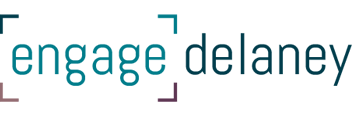The hidden power of audio for online engagement
by Naomi Devine, Senior Designer and Digital Engagement Specialist
No, I won’t likely start my video, so please stop asking. It won’t matter how many times you ask me during a Zoom/GoTo/Online meeting.
The reasons aren’t likely what you think. Well, ok, one of them likely is: ever since COVID19 gave us the world’s biggest experiment in working from home, I just don’t have the bandwidth. I’ve tried – new routers, better service. The result: better audio connection, but video is a party that only crashes and burns. My colleague likes to blame this on the fact that I live on an island, and if so, I’ll take the trade off. 😊
As an engagement planner, it is important to remember that unequal access to quality internet should not be a barrier to participation. It is also important to remember that during an in-person facilitated session, we don’t single out people who don’t participate overtly or in the way WE want; likewise, we shouldn’t single out people during an online meeting and demand they put on their video. We don’t know all the good reasons why they might make this choice, but ultimately, it’s theirs to make.
I’m here to say this: audio is your friend – for a few reasons. Consider the following benefits:
- Combat ‘Zoom Fatigue’. Mixing up your need for video to be on allows you to help your participants manage what’s being called ‘Zoom fatigue’. A key reason that online meetings are so draining is that they are set up to tax our cognitive load (cognitive load can be thought of as the amount of mental effort it takes to understand and respond to what is happening). Video has delays that mean the body language and facial expressions are not appearing as instantaneously as they do in-person. The disconnect and delay causes distress in our ability to accurately read emotions, which is draining. Multiply this by as many faces you have staring at you in an online meeting, and you can see how this becomes exhausting quite quickly.
- Staring less at your own face (although I’m sure it’s a great face). It is stressful to stare at your face for long periods of time (luckily Zoom has a feature that allows you to hide your video feed from yourself – this is worth checking out in other platforms as well).
- Spotlight important information by delivering it by audio only. I always advise this for presenters for in-person presentations, to great effect (tip: turn your presentation screen white or black by hitting ‘w’ or ‘b’ on your keyboard to do this in PowerPoint). Audio is intimate in a way that video is not, which can allow for better uptake of information. There is a reason that podcasts are so popular.
- Audio allows you to stand and move around, which is conducive to learning and thinking. It also frees you from trying to ensure your face looks ‘right’ all the time.
Which brings me to my last (and most personal) reason. Many people want to be able to ‘read’ faces when in meetings to make better decisions. There are a few problems with this line of logic. The first was mentioned above – there is a delay on video and this interferes with our ability to correctly interpret emotions in others. But also consider this: my resting face looks ‘angry’ (there is a colloquialism for this that isn’t exactly kind to women that describes this, so I won’t share it here), and people misinterpret my facial expressions in real time – a lot of the time – but, I can communicate how I’m feeling with the sound of my voice.
I can’t remember how many times I’ve been listening deeply to someone speak only to find out they thought I was upset with them! It’s disconcerting. Also – can you imagine getting the response “I’m uncomfortable because my face looks angry when in reality I’m not,” as an answer from a participant to a request to turn on video – takes things from zero to awkward very fast.
Hopefully these tips will help make your next meeting a more cognitively enjoyable experience. If you prioritise some audio-specific time in your next online meeting or workshop, I promise the change up in format will yield benefits you didn’t think were possible. And don’t forget a good old fashion conference call can also work.




